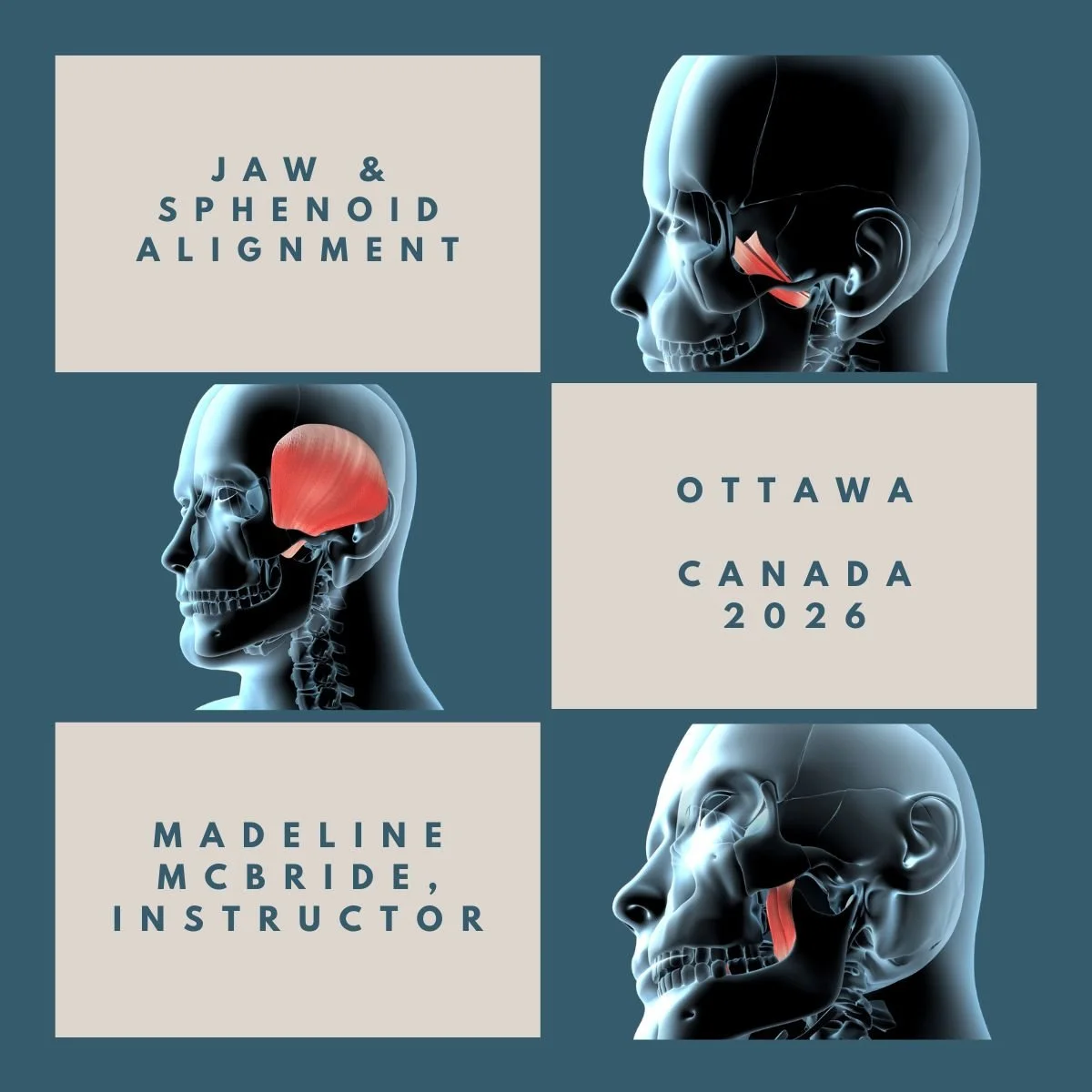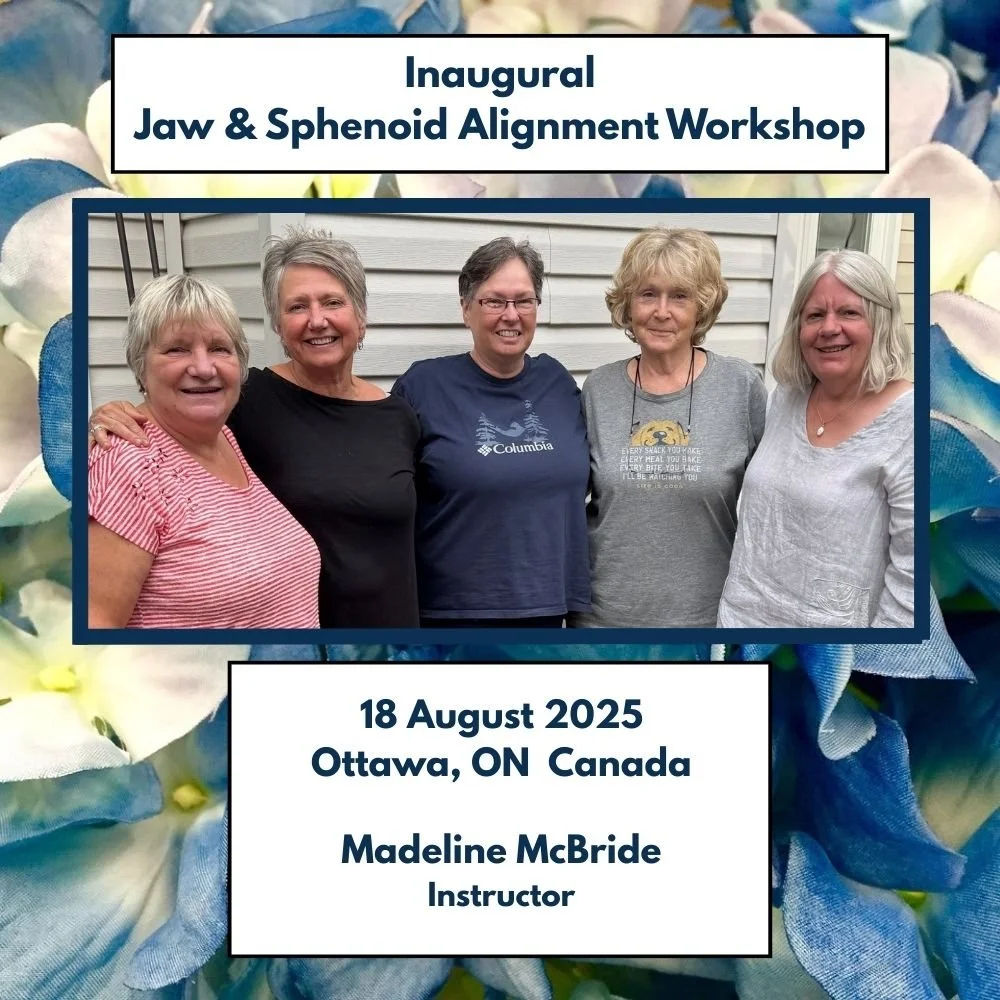WHAT YOU WILL LEARN
In this four (4) hour hands-on workshop you will learn:
Typical causes of lower jaw (mandible) misalignment;
Anatomy of the temporomandibular joint (TMJ) and key muscles affecting alignment and function of the mandible;
How to assess occiput & jaw alignment supine and seated;
How to assess mandible alignment in two planes;
Key back and neck muscles that pull the occiput out of alignment;
How to assess and restore occiput alignment;
An effective manual technique to release muscle tension and restore jaw alignment;
The treatment sequence (assessment-order in which to treat muscle tension-reassessment); and,
Madeline’s technique to align the sphenoid bone.*
*Read about the relationship of occiput/sphenoid bone alignment to pituitary gland function in this blog post.
Please note that exercises to address jaw muscle tension are not part of this protocol. This is a structured approach that relies on assessment, palpation to locate the damage creating muscle tension, an effective manual technique to restore full muscle mobility, and reassessment to confirm alignment.
INSTRUCTOR
Madeline McBride has a Master’s degree in Civil Engineering. Post retirement she became a Certified Bowenwork Practitioner and Neuromuscular Therapist. Her cross-discipline skill set of mechanics + manual training resulted in this North American expert in restoring pelvis, jaw and spinal alignment after falls, accidents and other injuries. Learn more about her training and experience.
PREREQUISITES
This workshop is targeted to advanced massage therapists, Bowen therapists, osteopaths, and physiotherapists who treat muscles manually. It’s useful but not necessary to have Craniosacral and/or Bowen Therapy training.
Craniosacral therapists: this workshop’s emphasis on the biomechanical effects of neck & back muscle tension on jaw/occiput/sphenoid alignment is complementary to skills learned in Upledger CS1 & CS2, for example.
For information purposes, dentists, physicians, and others with anatomy training are welcome to attend to gain insight into how muscle tension causes jaw misalignment, TMJ issues and pain, and how to fix it.
To acquire and effectively use this technique you will need:
palpation experience,
a light touch, typically developed with Upledger, Barral or Bowen Therapy training,
sensitive fingers that can locate muscle damage (knots, strains) in muscle, and
patience.
2026 WORKSHOPS
Coming soon.
Class Photos



